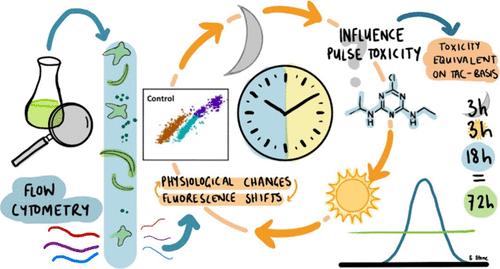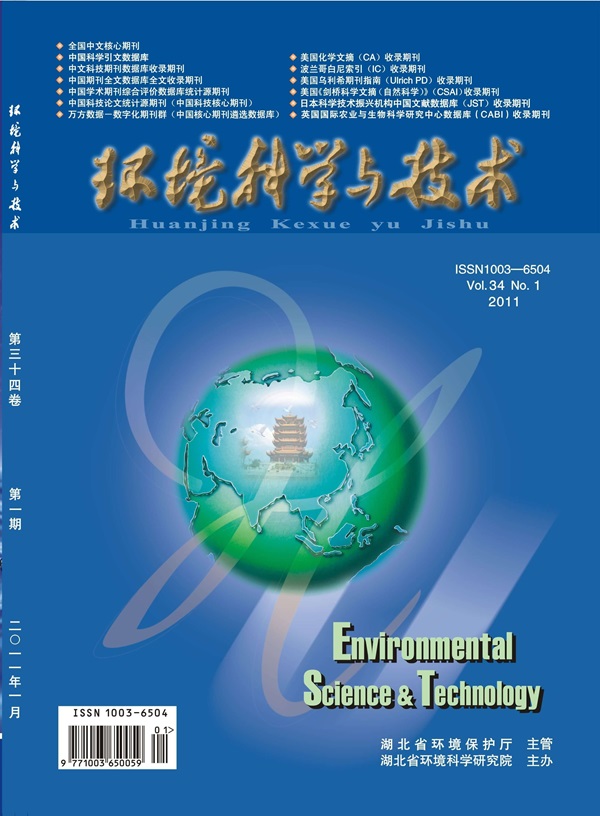Application of a Multispecies Pulse-Exposure Microalgal Bioassay to Assess Duration and Time-of-Day Influences on the Toxicity of Chemicals
IF 11.3
1区 环境科学与生态学
Q1 ENGINEERING, ENVIRONMENTAL
引用次数: 0
Abstract
Aquatic organisms may frequently be exposed to short-term discharges of contaminants, including those from pesticide use, stormwater runoff, or industrial effluents entering waterways. Here, a new microalgal multispecies flow cytometry-based bioassay is used to assess knowledge gaps in risk assessments posed by the short-term exposure of organisms to contaminants. The toxicities of atrazine, metolachlor, and copper were assessed using four exposure scenarios, a 72 h exposure (continuous), an 18 h pulse exposure, and two 3 h pulse exposures (light and dark conditions), that assessed chronotoxicity. The influence of duration on toxicity explored the utility of two expressions of chemical-exposure dose: pulse-exposure concentration (PeC) and time-weighted average concentrations (TACs). The three coexisting microalgae (Monoraphidium arcuatum, Nannochloropsis-like sp., and Pediastrum duplex) tolerated higher concentrations for shorter 3 and 18 h pulses compared to continuous 72 h exposures. Toxicity estimates calculated on a TAC basis were effective for predicting the toxicity of the pulses of atrazine, metolachlor, and copper. Fluorescence data collected using flow cytometry were linked to physiological diel changes for each species. Chronotoxicity was observed for copper with two species. While continuous contaminant exposures provide a conservative estimate of toxicity compared to pulses, the duration and time of exposure are critical factors to consider when assessing the toxicity of contaminants to microalgae.

应用多物种脉冲暴露微藻生物测定法评估化学品毒性的持续时间和日间时间影响
水生生物可能会经常接触到短期排放的污染物,包括农药使用、雨水径流或进入水道的工业废水中的污染物。本文采用了一种基于流式细胞仪的新型微藻多物种生物测定方法,以评估生物短期暴露于污染物所带来的风险评估方面的知识差距。评估阿特拉津、甲草胺和铜的毒性时使用了四种暴露情景,即 72 小时暴露(连续)、18 小时脉冲暴露和两次 3 小时脉冲暴露(光照和黑暗条件),以评估时间毒性。持续时间对毒性的影响探讨了化学暴露剂量的两种表达方式:脉冲暴露浓度(PeC)和时间加权平均浓度(TACs)。三种共存微藻(Monoraphidium arcuatum、Nannochloropsis-like sp.和 Pediastrum duplex)在较短的 3 小时和 18 小时脉冲暴露中的耐受浓度高于连续 72 小时暴露的耐受浓度。根据总砷浓度计算的毒性估计值可有效预测阿特拉津、甲草胺和铜的脉冲毒性。使用流式细胞仪收集的荧光数据与每个物种的生理昼夜变化相关联。在两个物种中观察到铜的慢性毒性。与脉冲相比,连续接触污染物可提供保守的毒性估计,但在评估污染物对微藻的毒性时,接触的持续时间和时间是需要考虑的关键因素。
本文章由计算机程序翻译,如有差异,请以英文原文为准。
求助全文
约1分钟内获得全文
求助全文
来源期刊

环境科学与技术
环境科学-工程:环境
CiteScore
17.50
自引率
9.60%
发文量
12359
审稿时长
2.8 months
期刊介绍:
Environmental Science & Technology (ES&T) is a co-sponsored academic and technical magazine by the Hubei Provincial Environmental Protection Bureau and the Hubei Provincial Academy of Environmental Sciences.
Environmental Science & Technology (ES&T) holds the status of Chinese core journals, scientific papers source journals of China, Chinese Science Citation Database source journals, and Chinese Academic Journal Comprehensive Evaluation Database source journals. This publication focuses on the academic field of environmental protection, featuring articles related to environmental protection and technical advancements.
 求助内容:
求助内容: 应助结果提醒方式:
应助结果提醒方式:


